 Sideway
BICK BLOG from Sideway
Sideway
BICK BLOG from Sideway
|
Link:http://output.to/sideway/default.asp?qno=111200013 Probability Summation of Accumulative Physical QuantityThe application of integration can also be applied to physical quantities other than mechanical quantity such as information about a physical system. In practical applications, when the interested quantity, for example the battery life of auto batteries are continuous random variable, the quantity can be expressed in the form of accumulative quantity. Imply 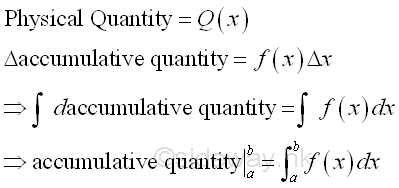
ProbabilityThe information of a system or a product is usually obtained by statistics. The quantifying information through the analysis of sample data can be used to measure performance and to improve quanlity. These quantities are often influenced by variation due to numerous factors which cannot be predicted. And if the values of the quantity are over an interval and the probability distribution of the quantity is known, the variation of quantities can be regarded as the continuous random variable of the function of a probability distribution. In other words, the probability of the quantity over a closed interval [a,b] can be determined from the known probability distribution of the quantity. The quantity distribution is called probability density function and the probability density function is a function of the continuous random variable. In order to make the probability density function work, the value of the function should always be greater or equal to zero and the summation of all values of the function from the negative infinity to the positive infinity is equal to one, Imply 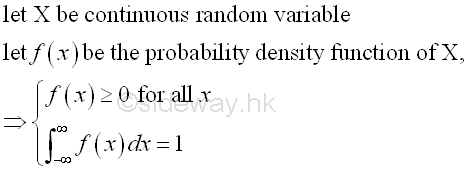
And the probability P of the quantity of the continuous random variable X over a closed interval [a,b] is 
Normal DistributionThe most widely used probability density function is the normal density function f(x) of the normal distribution for a continuous random variable. The normal distribution N(μ,σ2) of a probability density function is in the form of a bell-shaped distribution determined by the Gaussian function. 
The normal probability density function of a countinuous random variable X with mean μ and variance σ2 is 
Since the normal probability density function is a probability density function, the value of the function is always greater or equal to zero for all x from the negative infinity to the positive infinity and the summation of all values of the function from the negative infinity to the positive infinity is equal to one. Imply 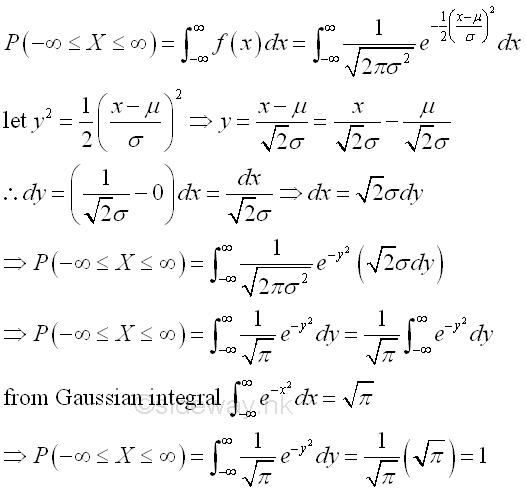
The distribution of the continuous random variable X with specified mean μ and variance σ2 can be obtained by 
Since the integral of normal probability density function does not have a closed-form solution, numerical methods are required to obtain the solution of a general normal random variable X. For normal random variable X with zero mean and unit variance, the solution may also be obtained via the use of standard normal distribution tables. Therefore a substitution is needed to shift and to scale the variable of integration to the standard form with zero mean and unit variance, that is standard normal distribution N(0,1). The standard continuous random variable Z becomes 
The standard normal density function of the standard continuous random variable Z with mean μ equal to zero and variance σ2 equal to 1 is 
And the standard normal distribution function with the substitution of the continuous random variable Z is 
Therefore any normally distributed random variable X can be determined by the standard normal distribution and the value from standard normal distribution tables through the transformation of the variable from x to z according to the given mean and variance . Imply 
For example, a normally distributed random variable X with mean equal to μ and variance equal to σ2. The probability of random variable X smaller and equal to x is 
Or, a normally distributed random variable X with mean equal to μ and variance equal to σ2 equal to 1. If the probability of random variable X is pr, then x is 
Probability & Density FunctionBesides the normal density function, there are many types of simple density function. For example 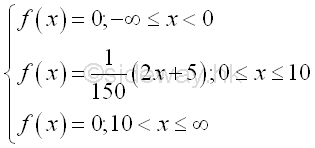
This is a probability density function because the value of the function is greater or equal to zero for all x and the summation of the value of the function for all x is equal to 1, imply 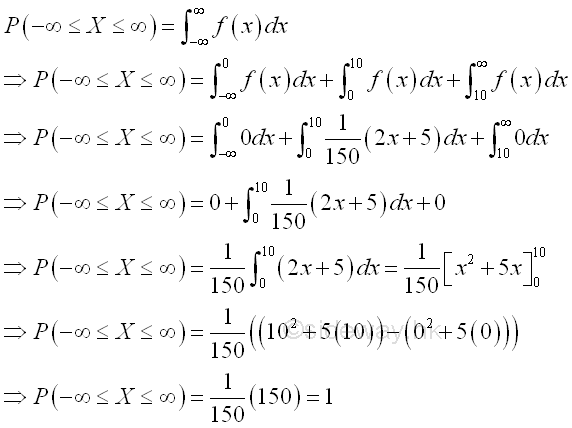
Graphically, 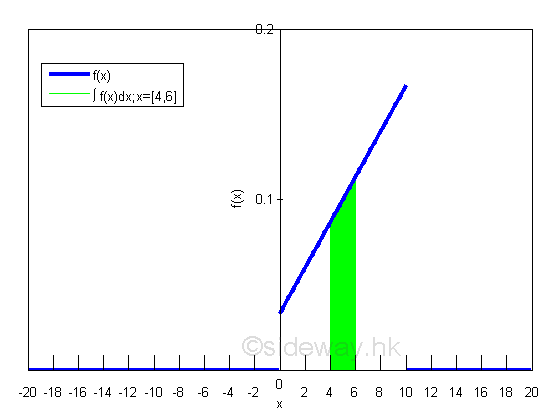
Therefore the probability of X in the closed interval [4,6] can be obtained by integration. For example 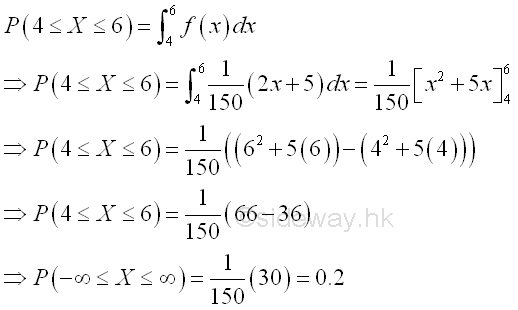
Graphically, 
MeanThe value of mean μ is the mean of a distribution with a random variable X. Mean is also known as the mathematical expectation of X. For a continuous random variable X, mean is equal to 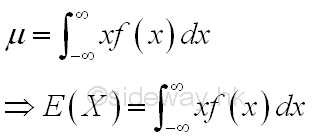
Mean is the weighted average of all items of the continuous random variable X. In the discrete sense, the ratio of percentage of each discrete item is equal to the probability of the discrete item. When the number of discrete items tend to infinite, the probability of variable x can be expressed as a density function of variable x. Imply 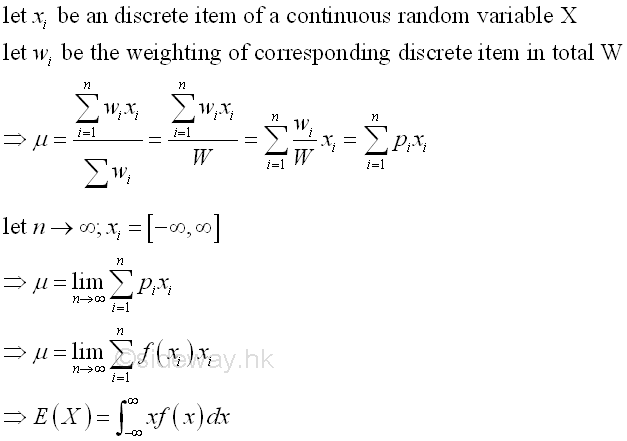
Mean of normal distributionSince the bell shaped normal distribution is symmetrical, the mean of a normal distribution locates at the center of the density function. Imply 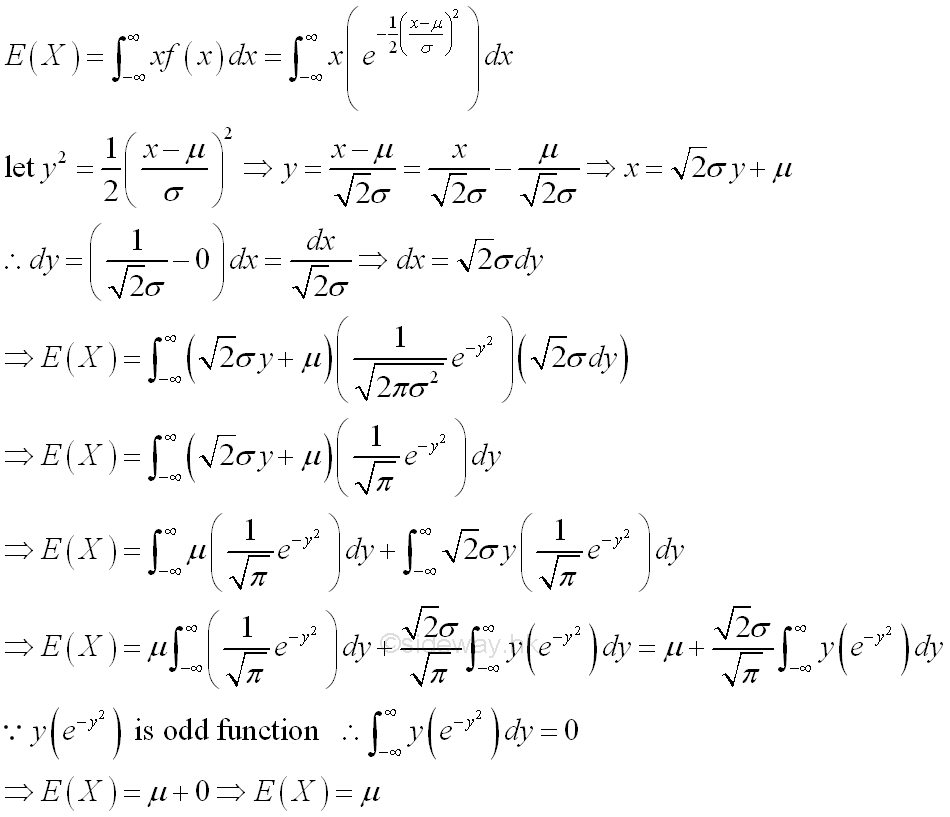
Mean of a DistributionMean of a distribution with simple density function can also be obtained in similar way. For example 
Therefore the mean of the distribution of X is 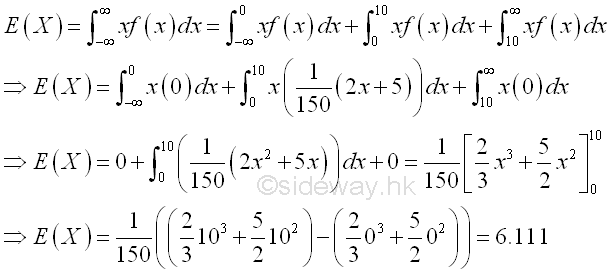
Graphically, 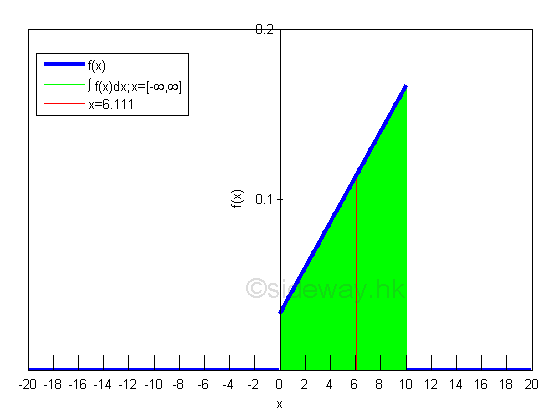
VarianceThe value of variance σ2 is used to measure the dispersion of a distribution of the values x of the random variable X. Variance is used to describe the distribution about its degree of the spread of the values x or the degree to which the values x scattered. For a continuous random variable X, variance is equal to 
Mean is used as the central reference of the dispersion of a distribution. In order to eliminate the negative value, the difference between the variable and the mean is squared. Variance is therefore the average of the weighted squared difference of all items of a continuous random variable X. In the discrete sense, the ratio of percentage of each discrete item is equal to the probability of the discrete item. When the number of discrete items tend to infinite, the probability of variable x can be expressed as a density function of variable x. Imply 
Variance σ2 is therefore the squared deviation of a distribution. And the positive square root of the variance is defined as the standard deviation σ. Imply 
Varance of normal distributionSince the bell shaped normal distribution is symmetrical and the mean of a normal distribution locates at the center of the density function, the values of a normal distribution is spread symmetrical on each side of the mean. Imply 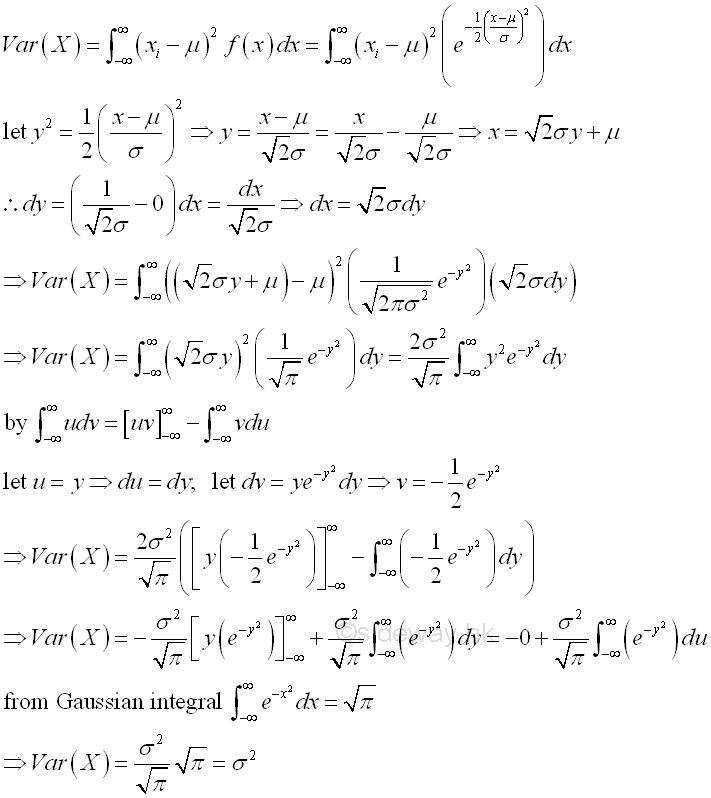
Varance of a DistributionVarance of a distribution with simple density function can also be obtained in similar way. For example 
Therefore the varance σ2 of the distribution of X is 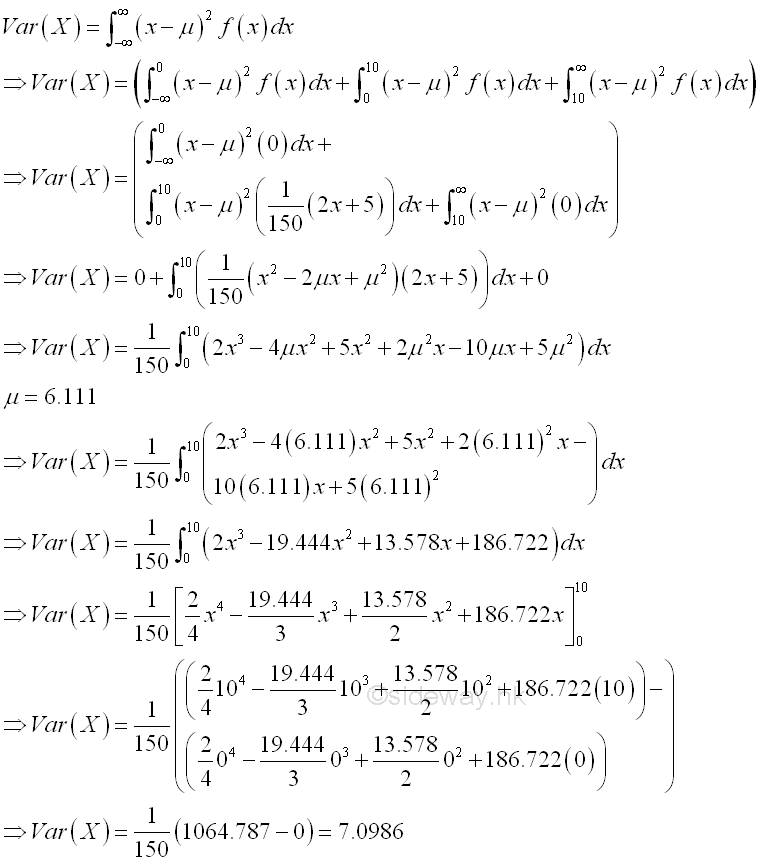
And the standard deviation σ of the distribution of X is 
|
Sideway BICK Blog 25/12 |
||||||||||||||||||||||||||||||||||||||||||||||||||||||||||||||||||||||||||||||||||||||||||||||||||||||||||||||||||||||||||||||

